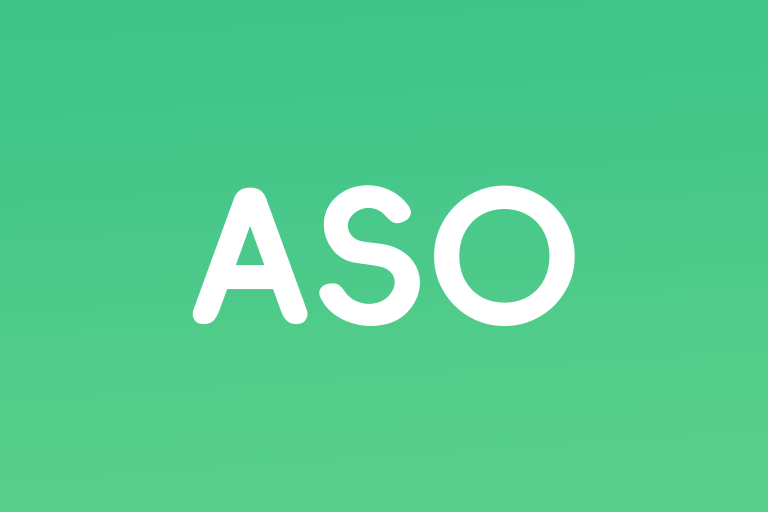In today’s crowded app marketplace, getting your app noticed can feel like an uphill battle. That’s where App Store Optimization (ASO) comes in. ASO is the process of optimizing your app’s listing to improve its visibility and ranking on app stores like Google Play and Apple’s App Store. It’s a vital tool for app developers, but with so many myths floating around, it’s easy to get lost in the noise. Let’s break down some of the most common misconceptions and set the record straight.
Myth 1: ASO is All About Keywords
Reality: Yes, keywords are important, but they’re far from everything. Many app marketers think that stuffing the app title and description with keywords will guarantee top rankings. In reality, app stores also consider factors like app performance, engagement, ratings, and reviews. A strong ASO strategy goes beyond keywords to include App Keyword Analytics, user behavior, and reputation management
Focus on delivering value — not just visibility.
Myth 2: The App Title is the Most Important Factor
Reality: The app title is important, but it’s not the magic bullet for success. While your title helps users quickly understand what your app does, it’s just one part of the equation. Other elements, like your app description, screenshots, and preview videos, all play a huge role in converting potential users into actual downloads. Plus, user reviews and ratings heavily impact your ranking. If you focus solely on your title, you might be neglecting these equally important factors.
Myth 3: ASO is a One-Time Task
Reality: ASO isn’t something you set and forget. It’s an ongoing process. App stores are constantly changing their algorithms, and user behavior shifts over time. To stay ahead, you need to regularly monitor your app’s performance, test new keywords, refresh your visuals, and keep your app updated. A one-time ASO effort won’t cut it in a dynamic market. Think of ASO as a marathon, not a sprint.
Myth 4: Reviews and Ratings Don’t Matter for ASO
Reality: Reviews and ratings matter — a lot. They signal app quality to both users and app stores. Positive reviews improve ranking and conversion, while negative ones can hurt performance. Developers can manage and analyze feedback using FoxData Reviews Management Tools to enhance reputation and respond to users effectively.
Myth 5: ASO Only Helps with Organic Growth
Reality: While ASO drives organic installs, it also boosts paid campaign performance. An optimized listing improves conversion from paid traffic, increasing ROI on ad spend. App stores reward high-converting apps with better visibility. Combining ASO with AI Marketing Tools or Apple Search Ads optimization through FoxData’s Apple Search Ads Service can maximize both organic and paid growth.
Myth 6: ASO is the Same Across All App Stores
Reality: Not all app stores are created equal. The Google Play Store and Apple’s App Store have different algorithms, requirements, and priorities. For example, Google Play uses a more complex algorithm that considers factors like user engagement and uninstall rates, while the Apple App Store places more emphasis on app metadata, reviews, and ratings. To succeed, you need to tailor your ASO strategy to the specific nuances of each platform.
Myth 7: ASO Can Make Up for a Poor-Quality App
Reality: No matter how well you optimize your app store listing, it won’t save a low-quality app. ASO can help get your app discovered, but if the app itself isn’t good—if it’s buggy, hard to use, or doesn’t deliver on its promises—users won’t stick around. A great ASO strategy works best when paired with a solid, well-functioning app. Focus on delivering a top-notch experience first, and let ASO help spread the word.
Myth 8: ASO is Only About Getting More Downloads
Reality: Downloads are just the beginning. Successful ASO also focuses on user retention and engagement. High retention rates and strong user activity signal app quality and stability, improving visibility in the long run. You can measure these factors with User Retention Analysis Tool to ensure your growth is sustainable.
Conclusion
App Store Optimization (ASO) is key to getting your app noticed, but it’s important to avoid the myths that can lead you astray. Instead of just focusing on keywords or the app title, remember that ASO is about the whole package: a solid app experience, good reviews, and continuous optimization. ASO isn’t a one-time fix—it’s an ongoing process that helps your app stay visible, attract users, and keep them engaged. With the right strategy, your app can stand out and succeed in a crowded marketplace.
FoxData app marketing platform offers lots of effective ASO tools make your app promotion works more professional and more easier.







